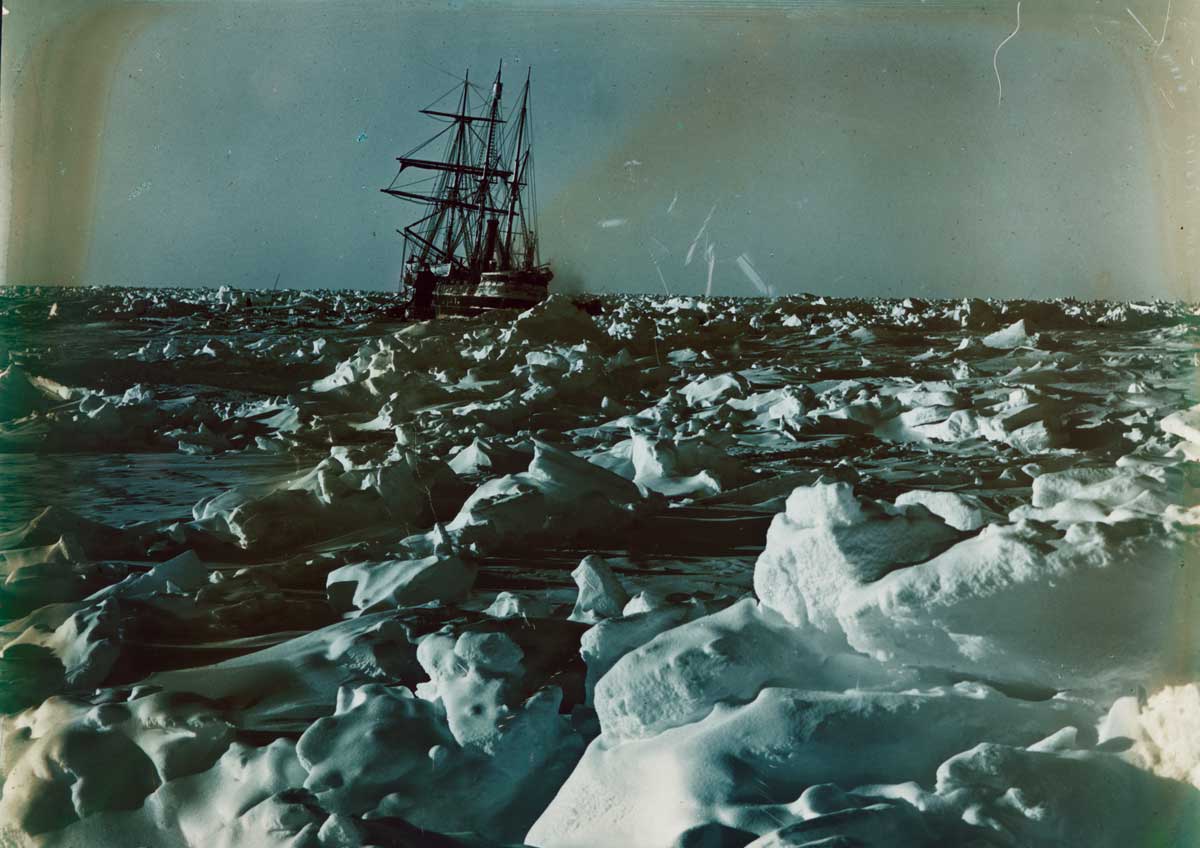All At Sea | History Today - 4 minutes read

The title of Australian historian Joy McCann’s chronicle of the Southern Ocean says it all: a sea wilder than any other, striated by latitudinal bands whose crescendo of nicknames (Roaring Forties, Furious Fifties, Screaming Sixties) give more than a hint of its character. It is an aquatic realm, held apart from the grand narratives of human history by its remoteness. Stretching unimpeded by land around the southern belt of the planet, the Southern Ocean’s perimeters are formed by latitude, climate and current patterns; otherwise it bleeds almost seamlessly into the Atlantic, Pacific and Indian Oceans. McCann builds a picture of the sea: the motile mountains of waves that tumble through the Drake Passage, snow petrels and sooty albatrosses body-surfing the sea’s surface, upside-down constellations as unfamiliar to northern hemisphere navigators as hieroglyphs.
Along with Antarctica, the Southern Ocean was the last quadrant of the globe to be ‘discovered’ by Europeans. McCann’s concise historiography makes judicious use of the journals and accounts of seafarers and explorers. Johann Forster, the Prussian naturalist who accompanied Captain James Cook’s voyages, wrote that there is ‘nothing but water, Ice & Sky’. The idea of nothingness haunts our relationship with this ocean to this day. McCann’s challenge is to narrate the story of a place where humans traverse only the surface.
She weaves together two powerful tropes: desolation and destruction. With the most volatile seas on the planet, empty of ports of rescue and stocked with fantastical creatures – the blue whale, the albatross, seemingly infinite varieties of penguin, the leering, carnivorous leopard seal – the test set by Southern Ocean waters to early European sailors was one they often failed, with fatal results.
In McCann’s affecting portrait, however, we see how, over millennia, the ocean’s distance from densely peopled areas of the planet and the hostility of its conditions created a vast nature reserve. Once Europeans discovered the wildlife-rich body of water the result was monumental slaughter. Without resorting to anecdote or melodrama, McCann calculates the price paid by wildlife in the pre-petroleum era. Before their discovery by the sealers and whalers who acted as hitmen for the mass industrial economies of the north, it is estimated that the fur seal population was anything from one to two million; by the turn of the 20th century it stood at just a few hundred.
The strength of McCann’s account is her ability to pair well known historical material of the so-called heroic age explorations of the Antarctic by Shackleton and others with illuminating glimpses of lesser known lore. Sections on cursed birds, ghost ships and horrible sea monsters – the Southern Ocean has long bred cautionary tales – grip the imagination. Also welcome is her account of the indigenous peoples of Tierra del Fuego, whose marginal existence in the harsh southerly tip of South America belied their maritime command and refinement. She explores debunked evolutionary theories of the Victorian and Edwardian ages – for example the belief that human cultures and animal species of the far south were the most primitive on the planet, doomed to extinction, having been out-competed by more successful groups and exiled to the rims of the earth, where they could do little but survive.
Via diary entries, McCann enters her historiography as a chronicler. Snapshots of her travels in the Southern Ocean bear witness to her fascination with sea ice in particular, its intelligence and flexibility, a kind of live creature. She reflects on the task of writing a history of a relatively de-peopled realm. There may be no coherent Southern Ocean ‘identity’ for humans, but as someone who has spent a good deal of time in its waters, this book led me to speculate that the take-no-prisoners character of the ocean seems to leave its imprint on those who have braved its brutal latitudes, stiffening resolve and delivering moments of sublime transport.
Like the Arctic and Antarctic, this ocean needs to be experienced to be apprehended. Ultimately the Southern Ocean has its own story which remains tantalisingly outside our purview, no matter how thoroughly humans have ransacked its riches.
Wild Sea: A History of the Southern Ocean
Joy McCann
Chicago
256pp £21
Jean McNeil’s books include Ice Diaries: An Antarctic Memoir (ECW, 2016).